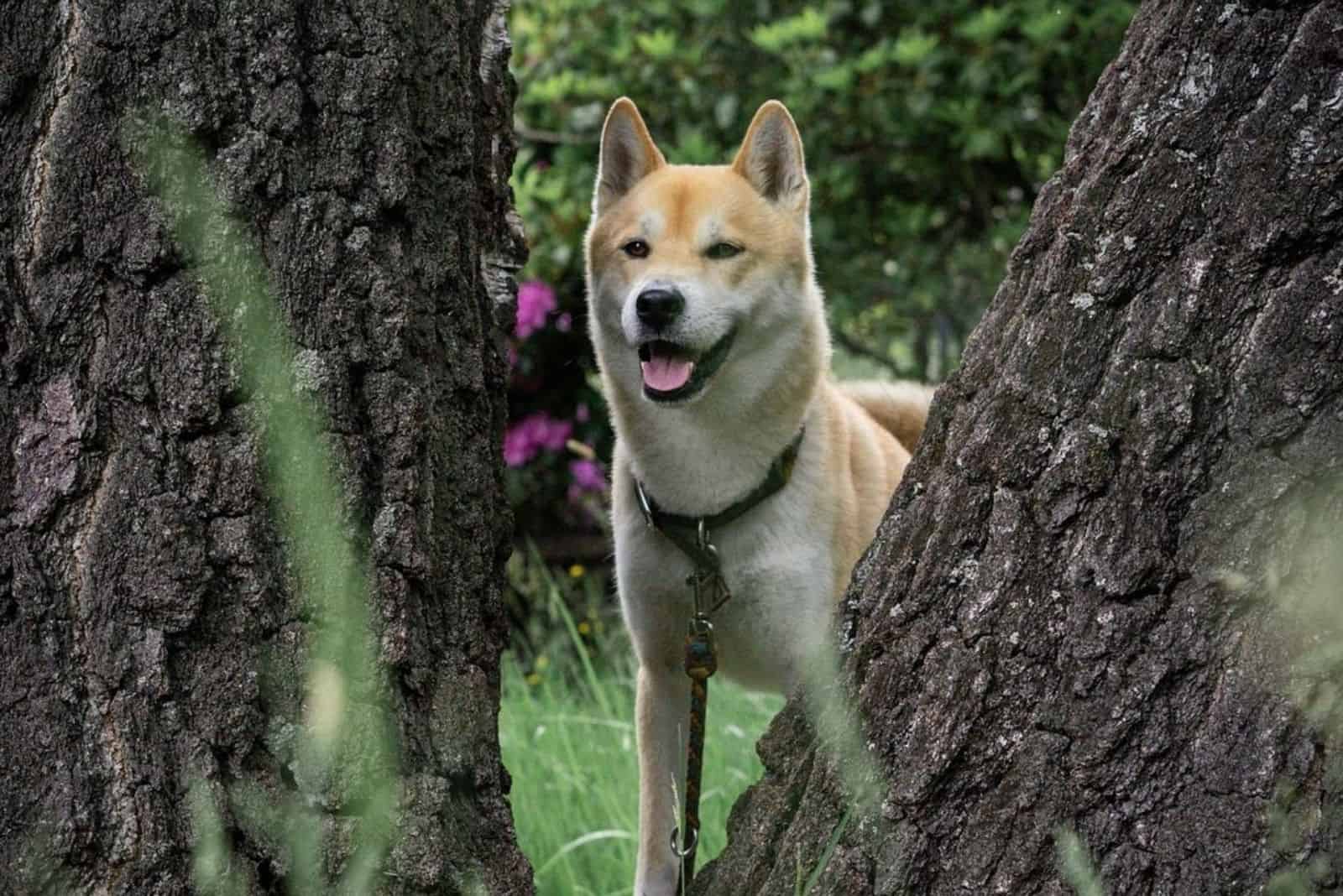Can’t make up your mind which dog breed you want? Perhaps you’re torn between a Shiba Inu or a Husky? Well, now you can have both!
Designer breeds are becoming very popular these days, as dog owners opt for hybrids rather than traditional purebred dogs. The possibilities here are literally endless, as there are hundreds of dog breeds out there just waiting to be crossbred.
Is this a good thing? How does it affect the offspring? And what are the implications for traditional breeds?
We’ll be looking into all of these issues and more as we delve into the subject of the Shina Inu Husky mix. We’ll explore their temperament and character, lifespan, any health issues they might have, and we’ll talk about grooming and care.
By the end of this article, you’ll have a good idea of what it’s like to share your home with one of these beautiful mixed-breed dogs, as well as being informed about the issues surrounding designer dogs in general.
Let’s begin with a reminder of what the parent breeds are all about.
The Siberian Husky
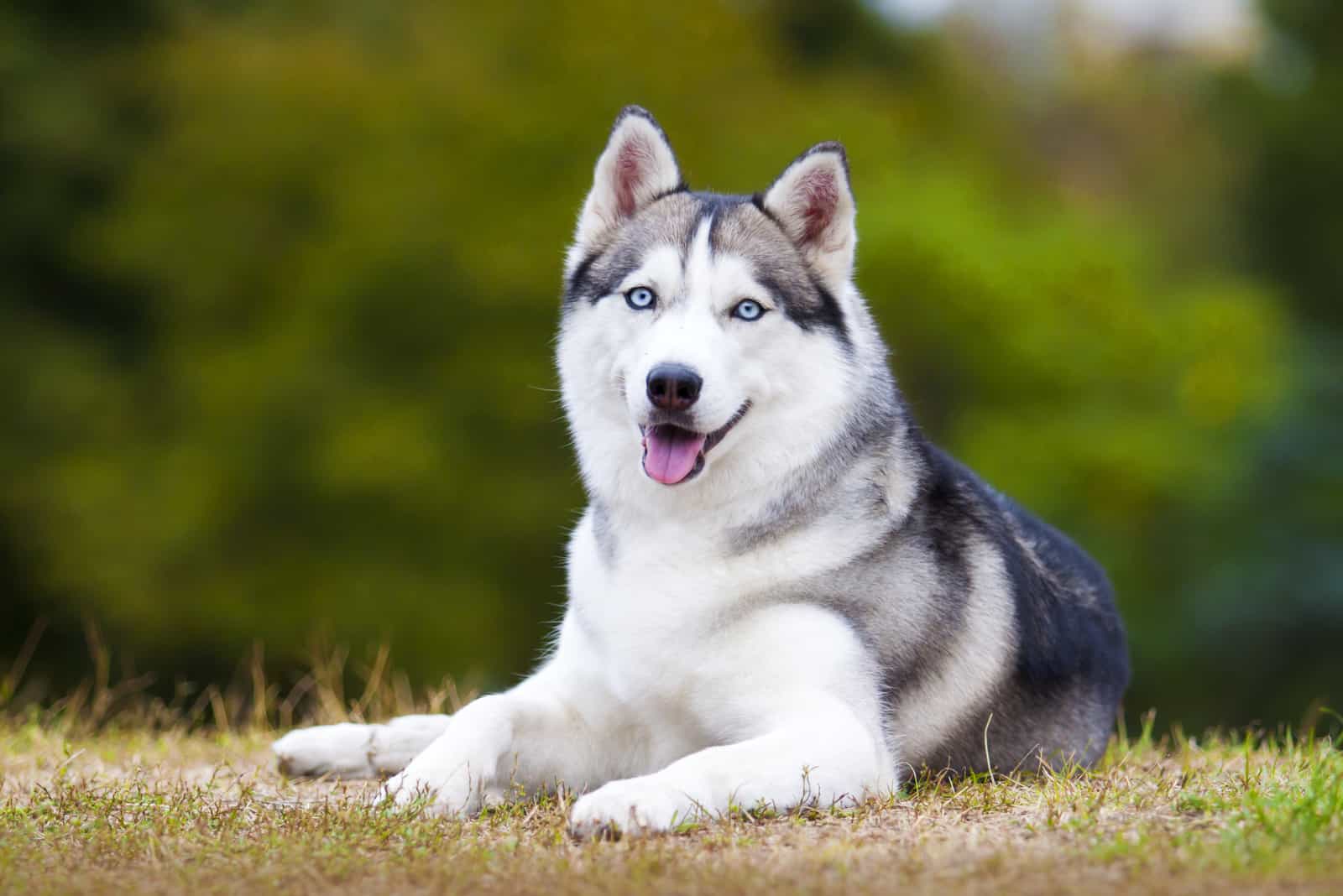
Built to survive the sub-zero conditions of the Plains of Siberia, these are energetic dogs that just love to work and play!
On top of this, they are smart, very affectionate with family members, and they want to make friends with just about everyone they meet. Because of this last trait, they don’t make very good guard dogs. They can be vocal, but excessive barking isn’t usually an issue.
They are more likely to howl than bark, which can be endearing and will make you smile. However, this can become a nuisance if left unchecked.
Opinions vary as to how good they are with kids. Most people are happy to let their kids play with the family husky and feel there is no danger. Others cite instances where Huskies have attacked young children (figures suggest that there is at least one fatality a year from Husky attacks).
The main thing to remember here is good old-fashioned common sense. All dogs, whatever the breed, have the potential for aggression under certain conditions. Children should be educated as to how they should behave and be supervised when dogs are around. Dog behavior needs to be monitored and understood, and swift action should be taken if there are any problems.
The key to eliminating any behavioral problems is early training. We’ll return to this later, as it is an essential part of a successful and problem-free relationship with your dog.
Huskies are pack animals by nature, meaning that they generally get on with other dogs. However, they also have a pretty high prey drive and will chase after any small animals that they happen across. A secure yard is essential, and you have to watch them at all times if you let them off their leash.
As for coat colors, the variety is so broad that it is known as the Siberian rainbow!
The official colors are:
• Agouti & white
• Sable & white
• Black & white
• Black & tan
• Red & white
• Brown & white
• Gray & white
• White
• Black
They are also accepted with saddle-back and piebald markings. They have a thick double coat that requires a lot of grooming.
An adult Siberian Husky weighs somewhere between 45 and 60 pounds for males and 35 to 50 for females.
The Shiba Inu
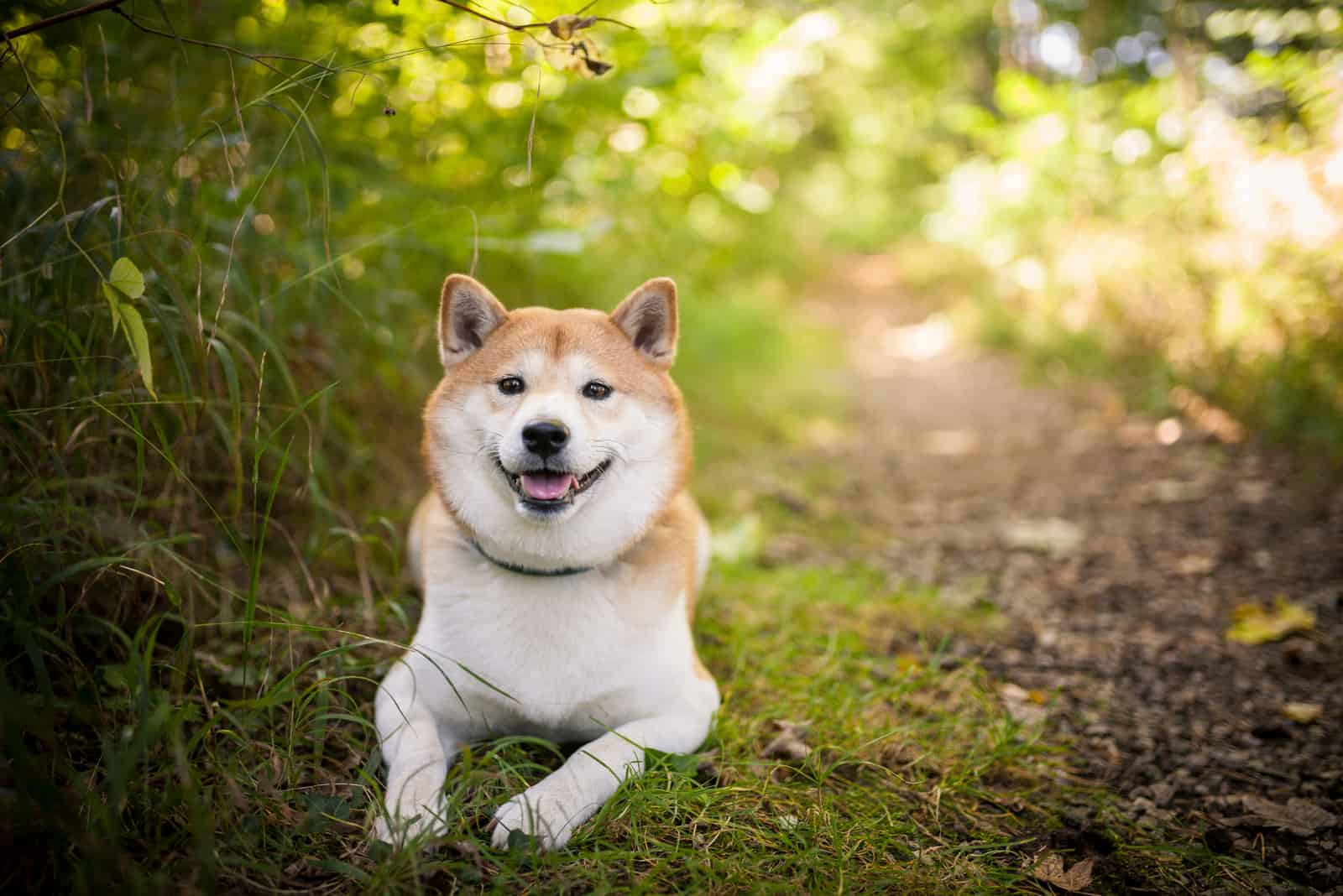
A small-to-medium Spitz dog originally bred for hunting in the mountainous regions of Japan, the Shiba Inu is now classed as a non-sporting breed by the American Kennel Club (AKC).
They are almost as affectionate towards their family as the Husky, but this is displayed differently. They aren’t always as cuddly as Huskies and don’t enjoy being pulled about. That’s not to say that they don’t love their family, but they are happy to just be in the same room as you. If you want proof of how much they love you, just watch their reaction when they feel that you’re under threat. The Shiba Inu is exceptionally protective!
Although many Shiba Inu owners are relaxed about their kid’s safety, others suggest that you need to be careful. These dogs have a reputation for being territorial and for resource guarding. This means that they don’t take kindly to sharing their stuff! If you try to take away a favorite toy or happen to go near their food bowl while they’re eating, they’re very likely to show their displeasure by baring their teeth, perhaps even nipping or biting.
As with the Husky, these dogs have a high prey drive. In fact, this trait is so strong in them that it’s advisable to always keep them on their leash. They’re lightning quick and experts at dodging any attempts to catch them. Any small pets in the home could be at serious risk of harm.
Shiba Inus are natural escape artists who will find any gap in a fence and will dig under, climb, or jump over it to pursue any luckless squirrel, cat, or other small creature that wanders by. A covered run is always the best option for these dogs.
These traits, along with a touch of stubbornness and mischief, make them unsuitable for first-time dog owners. You always need to assert your dominance over them, or they’ll run rings around you.
Unlike the Husky, they’re not so good with other dogs and will often show aggression. This can be reduced through socialization when they are pups, but you may still find that they aren’t too happy when other dogs are around.
They don’t have a ‘rainbow’ of coat colors like the Husky:
• Red
• Red sesame
• Cream
• Black & tan
They can also have white markings.
This coat sheds a lot, much like the Husky, but can be managed by brushing them regularly.
As for their size, the male Shiba Inu stands between 14.5 and 16.5 inches at the shoulder, while the female is 13.5 to 15.5 inches. Males weigh in the region of 23 pounds, and females are much lower, at around 17 pounds.
Meet The Husky Inu!
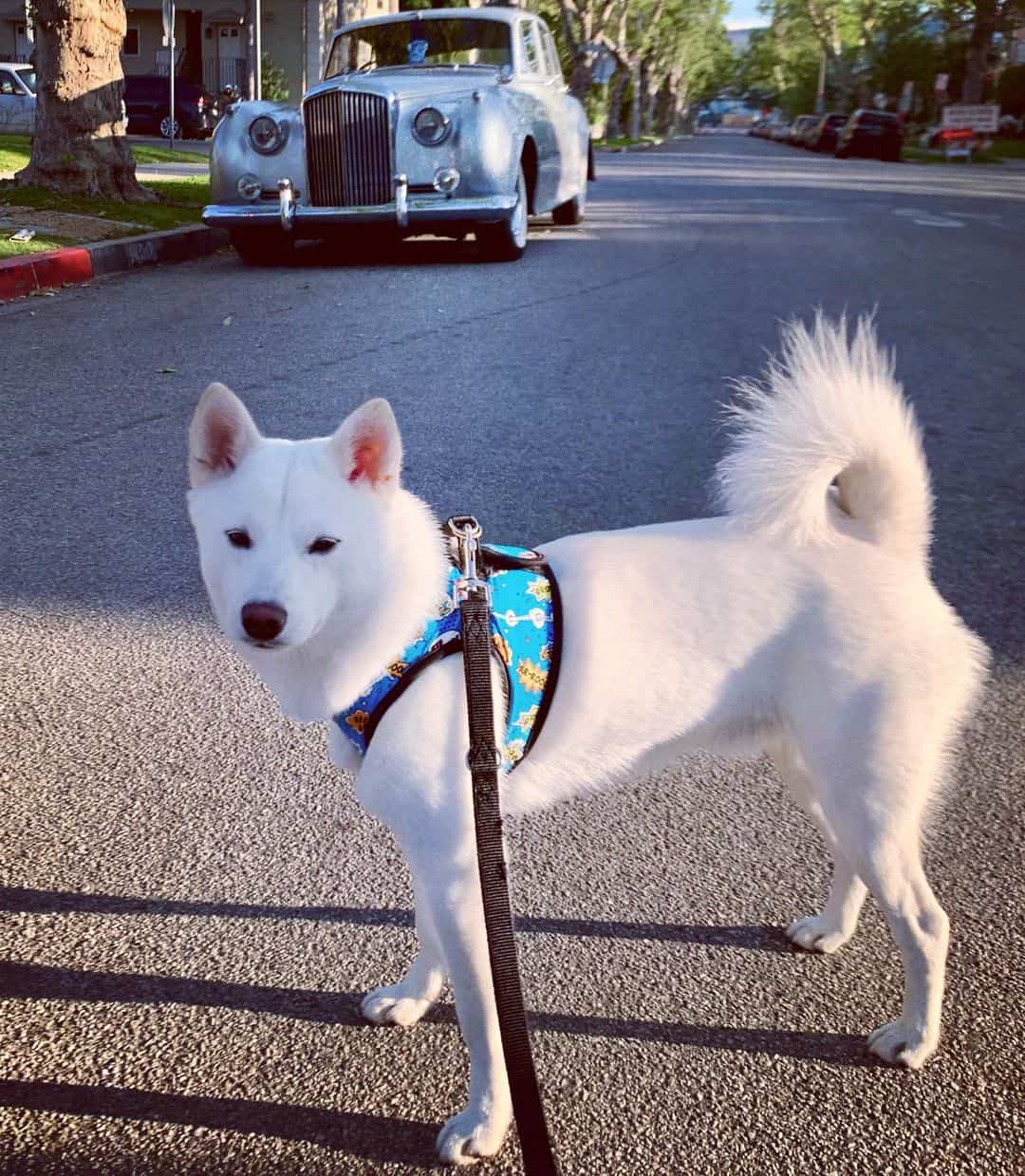
Photo from: @casperhollywood
Like most new designer dog breeds, this one hasn’t yet settled on an official name. Some people say Husky Inu, and others say Shiba Husky. Siberian Shiba has also been suggested, and some people even call it the Shusky!
Whichever name you prefer, there’s no doubt that this is a beautiful dog.
So, what is it like?
Well, as you’d imagine, in terms of its looks, it will have the foxy/wolflike features of the parents: pointed triangular ears and a long, pointed muzzle with a square nose.
It will inherit the parent’s eye color, which will be amber, dark, blue, and sometimes one eye will be a different color to the other.
This pup won’t be afraid to show its love for you. While some will be more affectionate than others, most will be happy to cuddle, though they will have an independent streak that sometimes needs its own space.
Whichever coat they inherit, it will be fluffy and will need some care. You’ll need to keep on top of that grooming regime, or you’ll be finding dog hair on and in everything.
The good news is that, just like their parents, the Shiba Husky is a clean dog without that ‘doggie’ smell that other breeds have. You won’t feel the need to bathe them too regularly.
What about their energy levels? These are active dogs, mentally and physically. You’ll need to commit to at least an hour of exercise every day, invest in some puzzle toys, and give them a task to keep them happy.
They’ll need a good diet of high protein food. Huskies process their food very efficiently and usually stay lean, so the Shiba Inu Husky mix will inherit this. It is important to avoid feeding them scraps or unhealthy ‘human food.’
Now we’ve introduced this unique pooch, let’s dig deeper.
Shiba Inu Husky Mix Weight
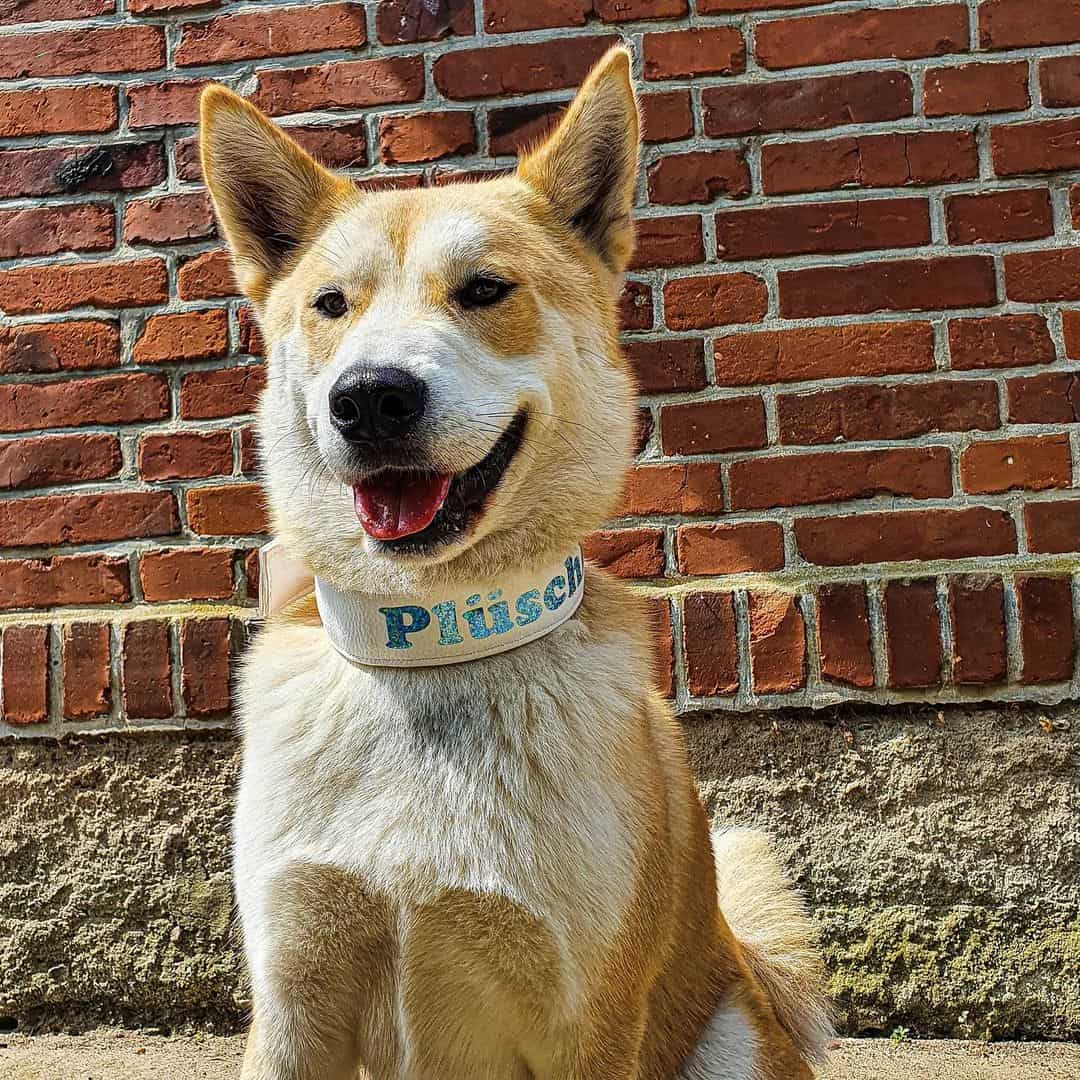
Photo from: @simba.husky.inu
They generally weigh between 25 and 50 pounds, which is significantly bigger than the Shiba Inu parent!
You couldn’t class it as a big dog, but don’t be fooled into thinking it will be ‘lightweight’ in any way. This is a strong, muscular, energetic dog.
Here are three important words to help you out: training, training, training!
We’ve mentioned it above, and we’ll mention it several times before the end of this piece. Training is your best friend, and you must persevere if you want to succeed.
But let’s look at those figures again, as that’s quite a large difference. The smallest Shiba Inu Husky mix weighs half as much as the biggest! This is because some pups will inherit genes from the larger Husky while others favor the Shiba Inu.
This highlights the challenges of creating mixed breeds, as it can be a bit of an experiment. Although breeders strive to produce a pup with the best features of the parent dogs, there’s always a chance that they’ll inherit undesirable ones.
This is one of the reasons why traditional breeders and breed enthusiasts warn against making hybrids and designer dogs.
Shiba Inu Husky Mix Temperament
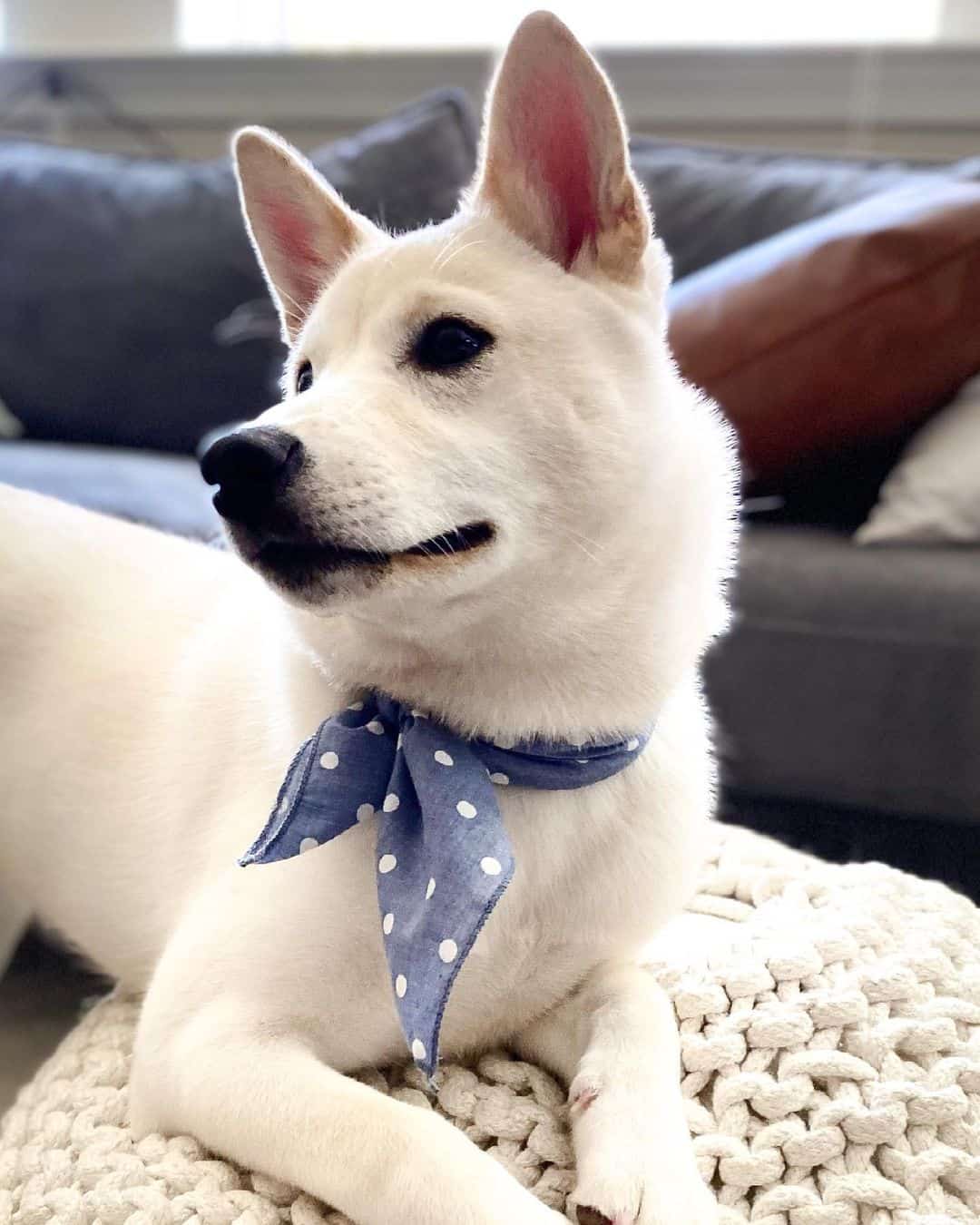
Photo from: @_lady_kai
Be prepared for a dog with high spirits and a real sense of curiosity!
This is one very energetic dog. Obedience training will make your life easier, but this will be a challenge. They’re too smart for their own good and would rather be playing a game than buckling down to a serious training session. You’ll need to be assertive, firm, calm, and dedicated. It’s totally worth all the blood, sweat, and tears, though. Once they’ve grasped the basic concept, your life will be much easier.
However, don’t think that the job is done! Your dog may need correcting and retraining at various times, simply to keep them from straying into bad habits.
The trouble with mixed breed dogs is that personality and character are difficult to predict. Sometimes, the less attractive traits are inherited by the hybrid dog, resulting in behavioral problems that are not easy to eliminate.
This is yet another reason why training your dog from a young age is so very important. Many undesirable traits can be curbed this way, as the dog understands basic commands given by someone it loves and respects. You are the pack leader, which is why you need to be firm, always impressing your authority on your dog.
Although there’s a lack of information about them, what we know so far looks encouraging. They are active dogs, as we know, so they will fit in well with an active family. Once you’ve exhausted them, they’ll be happy to settle down by your side or even alongside you on the sofa with their head on your lap. This isn’t something you often see with the Shiba Inu parent dog.
So, it seems as if the Husky side has the edge when it comes to affection, and that extends to child-friendliness and interacting with other dogs. Nevertheless, socialization is never a bad thing and will iron out any unwelcome behavior.
There are signs that the Shiba Inu Husky mix can be an independent dog when the feeling takes it. They have their own minds and won’t always listen to your commands. This is where a firm hand is needed – not in a literal sense, as physical punishment is counterproductive and cruel. You need to set firm boundaries and let your dog know when they have crossed them.
Your pooch will be naturally curious, and you’ll see signs of that prey drive at times, so be aware and alert!
Above all, this is one extremely loyal and loving dog who just wants to have fun.
Shiba Inu Husky Mix Price
There’s not much in the way of consistent information regarding the cost of buying one of these designer dogs. This is because they are not so well known just yet.
As a rough guide, you should expect to pay at least $500 for your Shiba Inu Husky mix, and possibly up to as much as $1,000. This price falls well below the average price of a dog (of any breed) in the USA, which is $1,300.
So, how does this compare to the cost of the parent breeds?
How Much Do Shiba Inu Cost?
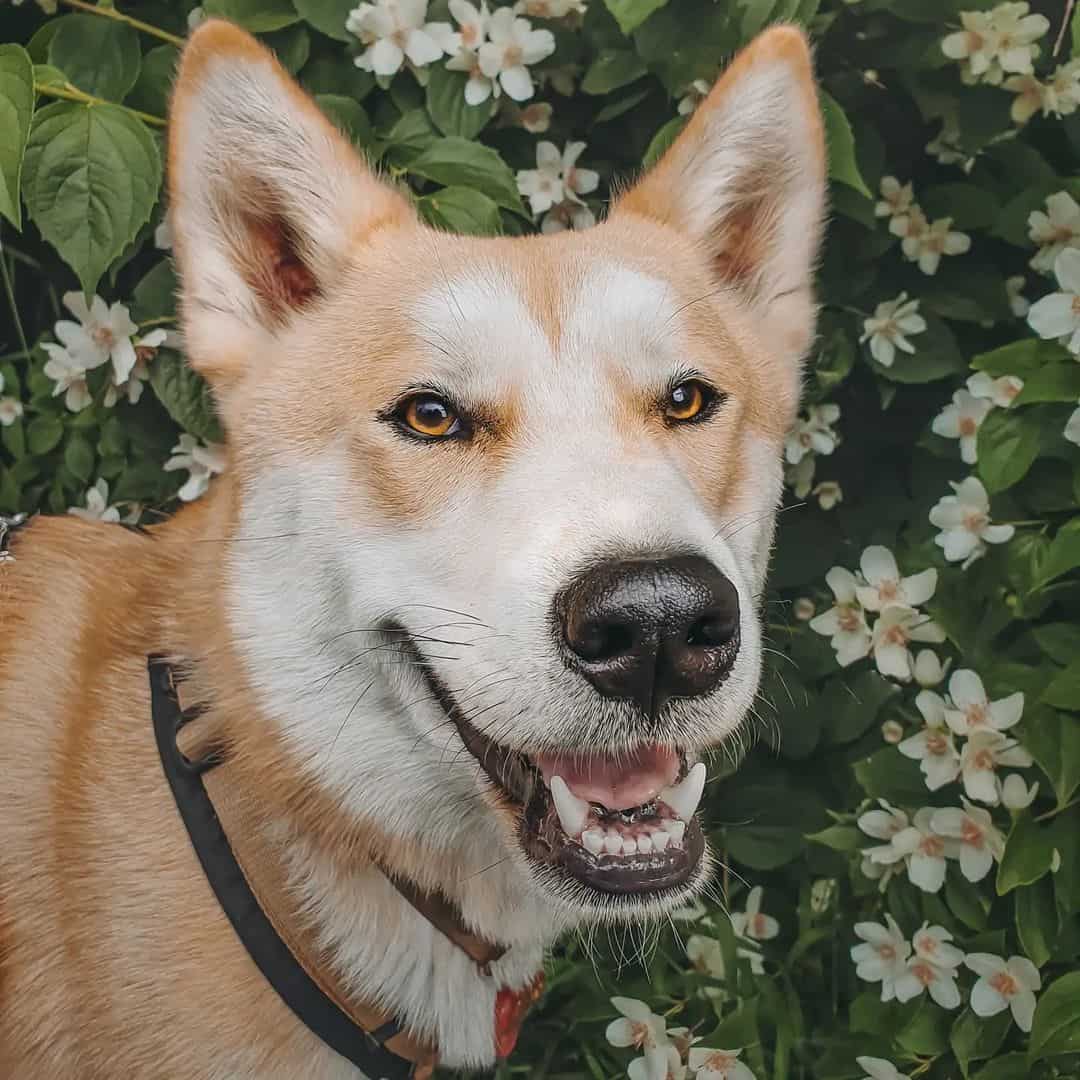
Photo from: @simba.husky.inu
You’ll need to set aside between $1,200 and $2,500 to bag yourself a Shiba Inu pup. In fact, as their popularity has grown in the last decade, their price has risen with it. Social media networks have helped spread the word, and some dogs even have their own Facebook pages, Twitter accounts, and websites.
Certain breeders will now charge $3,000 or more for an exceptional bloodline. Before the Shiba craze took over, making them 44th out of the two hundred most popular breeds in the USA, you could buy one for less than $1,000!
But what about the Husky?
Oddly enough, even though they sit at number 4 out of the two hundred most popular dog breeds, you can pick one up for as little as $600. However, they can go for between $1,300 and $5,000, depending on the breed lines and pedigree.
It’s always a difficult job to accurately present dog prices as it’s not an exact science. There are so many different factors influencing them that it’s only possible to offer a vague suggestion to give you some idea of how much you should expect to pay.
The Covid-19 pandemic has complicated things further, as demand for pet dogs increased dramatically during the lockdown periods, pushing prices higher. As demand falls again, prices will change to reflect this.
Anyone reading this who lives in the southern states of the USA should be thankful: prices there are generally lower than in the north!
One of the main factors determining the price is the breeder, and that’s what we’re talking about next.
Shiba Inu Husky Mix Breeder
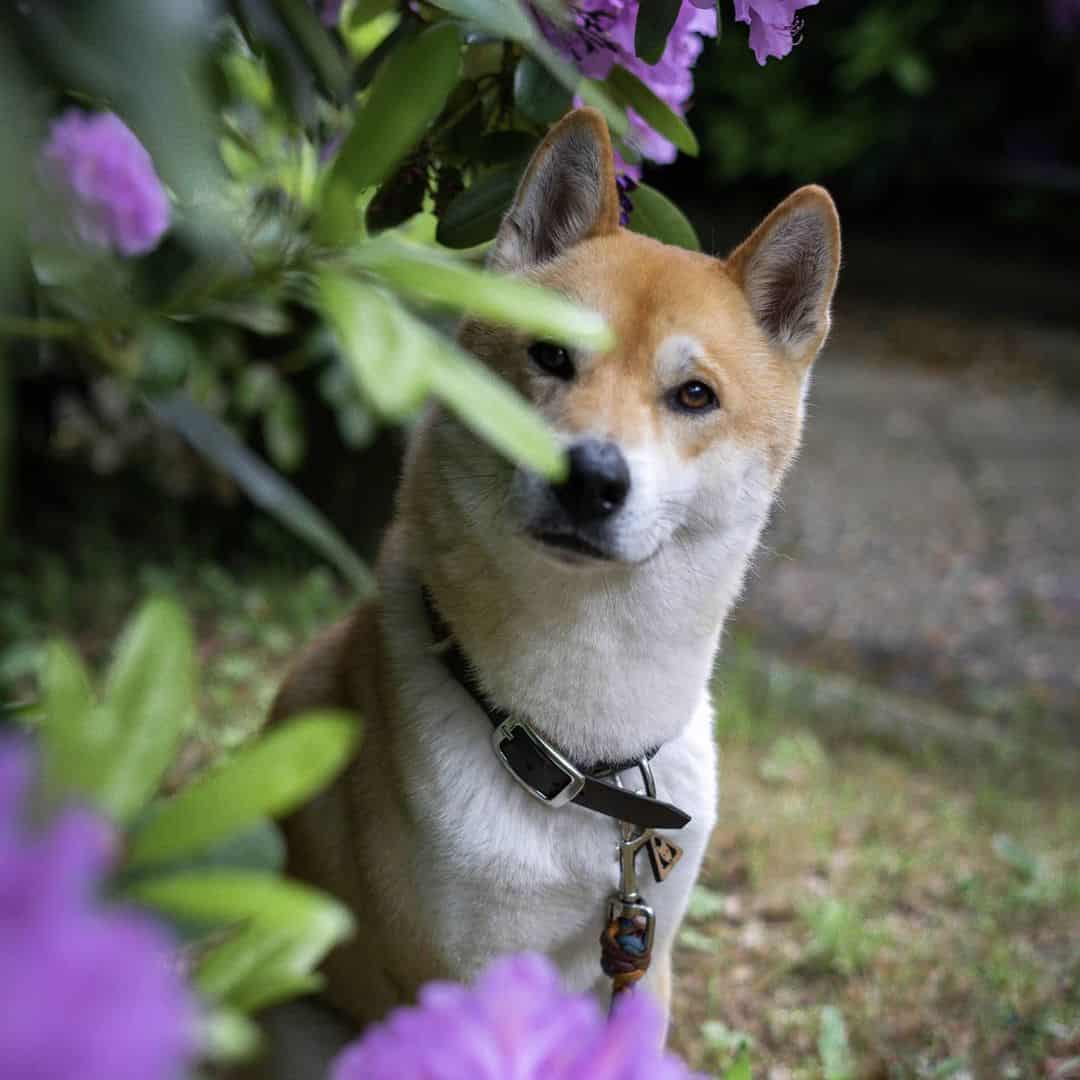
Photo from: @the_real_arkani
Choosing the right breeder is essential.
As with any type of business or industry, you get good and bad ones. When you walk into a car dealer’s yard, you immediately get a feel for the place. You’ll also catch vibes from the sales rep.
There may be times when the best thing to do is turn right around and beat a hasty retreat!
The same applies to dog breeders. In fact, it’s more important, as these people are dealing with living creatures. Reputable breeders look after their animals because they care. This is more than a job; this is their life.
You must visit the breeder in person to meet them and inspect their kennels.
With a reputable breeder, you can be sure that they’ll provide clean, decent, comfortable accommodation for their dogs. They’ll follow strict ethical guidelines regarding breeding programs. And they’ll use health screening and DNA testing to ensure that their pups are as healthy as possible.
Some will even provide health guarantees for their pups. Others will be happy for you to return the pup if something goes wrong. They’ll start the vaccination program and sometimes begin training and socialization, as they are eager to ensure the success of these pups. Their reputation depends on this, after all.
They will take an interest in where the puppy is going and will quiz you on your house and lifestyle. They’ll probably want to stay in touch, offering you advice and guidance when you most need it.
What about the other type of breeder? Well, if you wouldn’t buy a used car from them, you certainly wouldn’t consider getting a dog!
These people are just out to make a quick buck, with no thought for ethics or the welfare of the animals. When you visit, you’ll most probably be appalled by the state of the kennels – that’s if you’re even allowed to see them. Places like this, often called puppy farms or mills, feed their dogs poor-quality dog food.
Above all, if you’re not happy about any aspect and don’t feel comfortable buying from them, get away as quickly as possible.
Now we’ve dealt with that, let’s look more closely at our designer dog.
Husky Shiba Inu Mix Lifespan
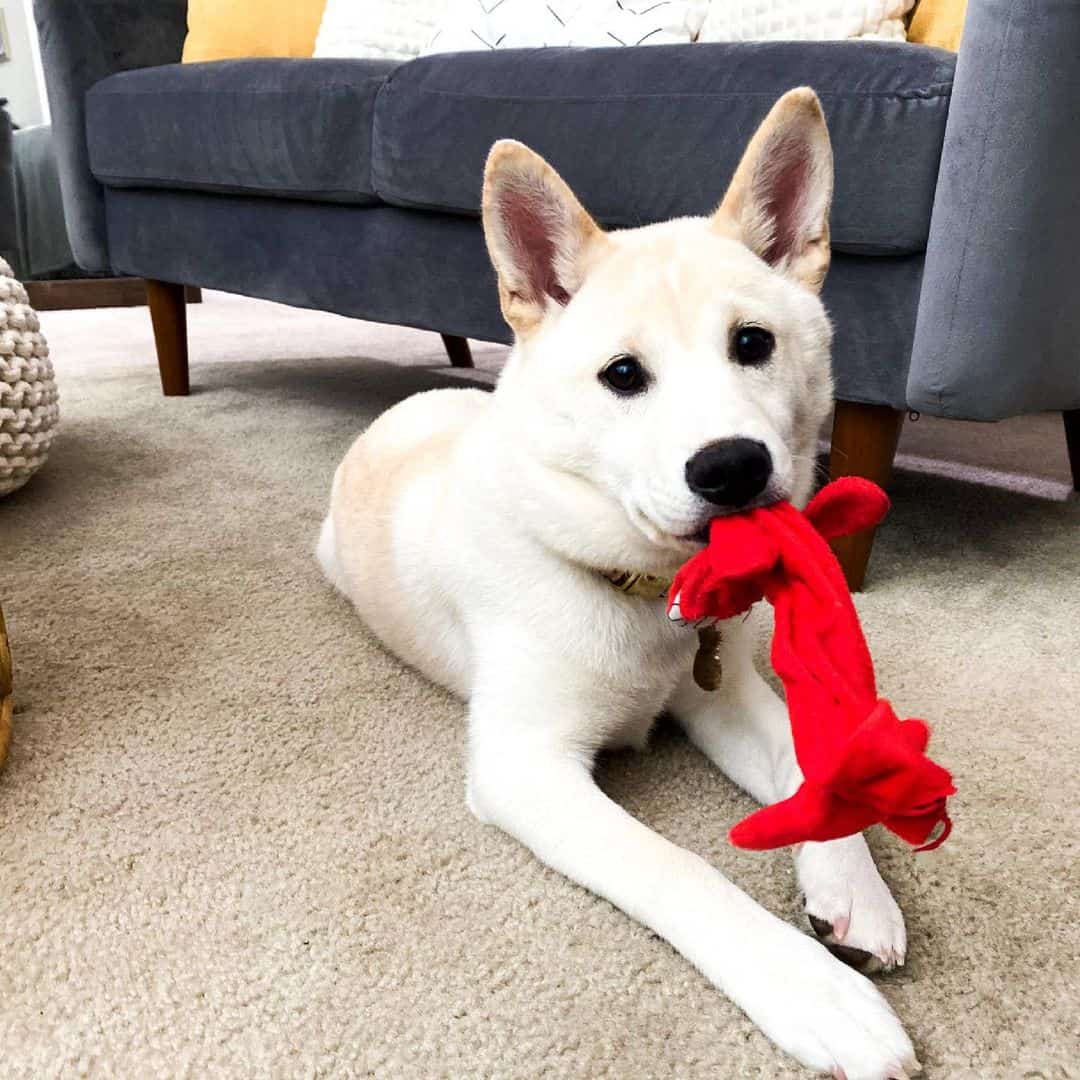
Photo from: @_lady_kai
The good overall health of both parent breeds, as well as their own longevity, provides the hybrid with an average life expectancy of between 12 and 16 years.
Smaller dogs tend to live longer, and the Shiba Inu Husky mix benefits from this fact. The average lifespan of dogs, in general, is between 10 and 13 years, so the Shiba Husky goes beyond this in most cases.
Of course, there is an element of luck involved, but you can play your part by ensuring that your dog has the best diet, all the exercise it needs and that you visit the vet fairly frequently for routine health checks.
Before all this, one sure way to get a good start is to get your dog from a good breeder, as we stressed earlier.
While we’re on the subject of health, now’s the time to see what health issues they might suffer from.
Shiba Inu Husky Mix Health Problems
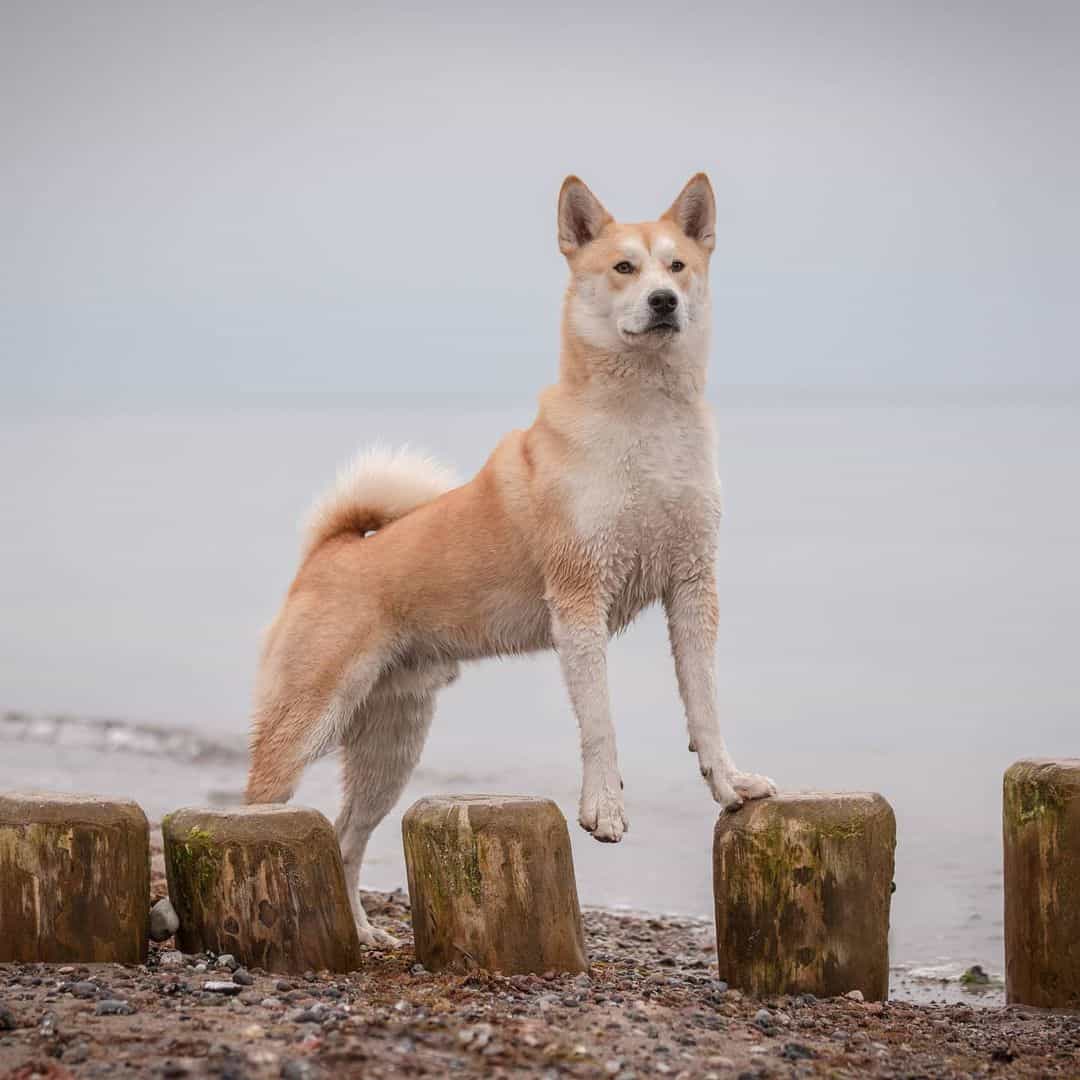
Photo from: @simba.husky.inu
Both the parent breeds are known to be pretty healthy dogs. As a result, the hybrid of the two breeds scores very highly in terms of their health.
There are a few conditions that might pop up, but they’re a pretty low risk. However, it’s always best to be prepared, just in case. Here are a few to look out for:
• Patellar luxation – A dislocating kneecap that often requires surgery to correct.
• Hip dysplasia – A painful joint problem that causes bones to rub together. Severe cases may require surgery.
• Glaucoma – A build-up of pressure in the eyeball due to the fluids being unable to drain properly. This can lead to blindness.
• Hypothyroidism – An underactive thyroid gland fails to produce all the necessary hormones for your dog’s body to function as it should. This can be managed through medication, but surgery is sometimes needed.
• Allergies – Dogs can be allergic to pollen or mold spores, but more often than not, they react to certain proteins in their food. This causes gastrointestinal problems and canine atopy: dry itchy, skin that makes the dog scratch or bite the affected areas. This often leads to skin infections.
It’s not a big list by any means, and most of these problems can be resolved, managed, or avoided. Once again, we have to stress that a good breeder will perform a health screening to reduce the chances of these being passed onto the pups.
Shiba Inu Husky Mix Puppy
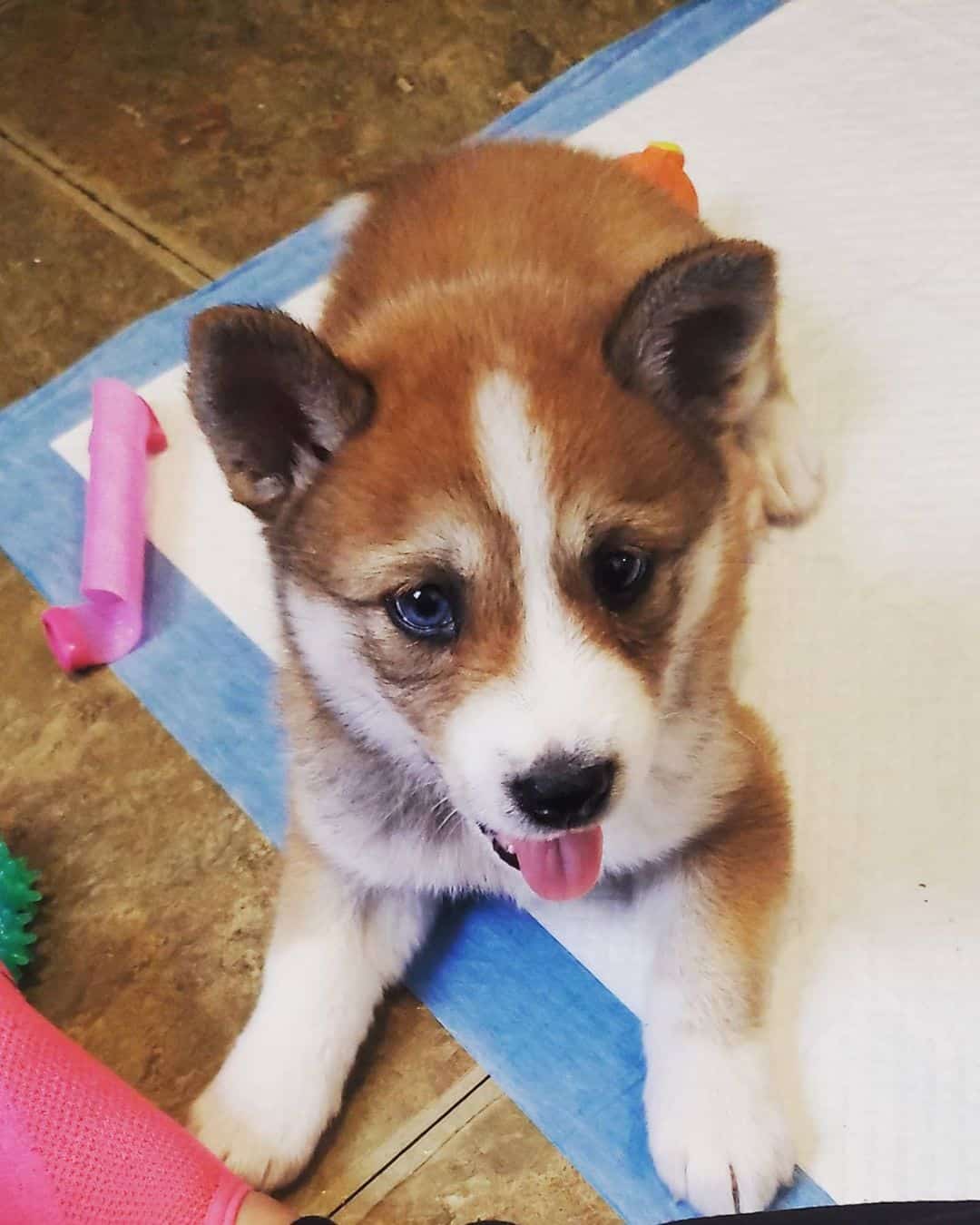
Photo from: @myloveforhachi
The puppy stage is the most important part of any dog’s life. It is absolutely essential that they get the nourishment that will help their bodies to develop properly.
A reputable breeder won’t release puppies until they are between eight and twelve weeks of age. They will have provided them with a good diet once they have been weaned onto solid foods. It’s your responsibility to continue this once you get them home.
Aside from this, you’ll need to be fully prepared for your puppy pal. Get your home puppy-proofed well before you bring them home, as this will help them settle in quickly.
There will be so many new sights, sounds, and experiences for them to cope with. Introducing new ones all the time could be overwhelming for them, so it’s best to have most things in place already.
There will be two main challenges in these early stages: teething and behavior.
The first can be dealt with by keeping a good stock of chew toys. They’ll need something to help soothe their inflamed gums, and you need to discourage them from chewing on your stuff!
As for behavior, you already know the answer. Your pup needs to be trained as soon as possible. It’s also in your best interests to introduce them to as many other dogs of different breeds, sexes, and ages as possible. It wouldn’t hurt to do the same with humans, as this will reduce their wariness of strangers as they mature.
Shiba Inu Husky Mix Full-Grown
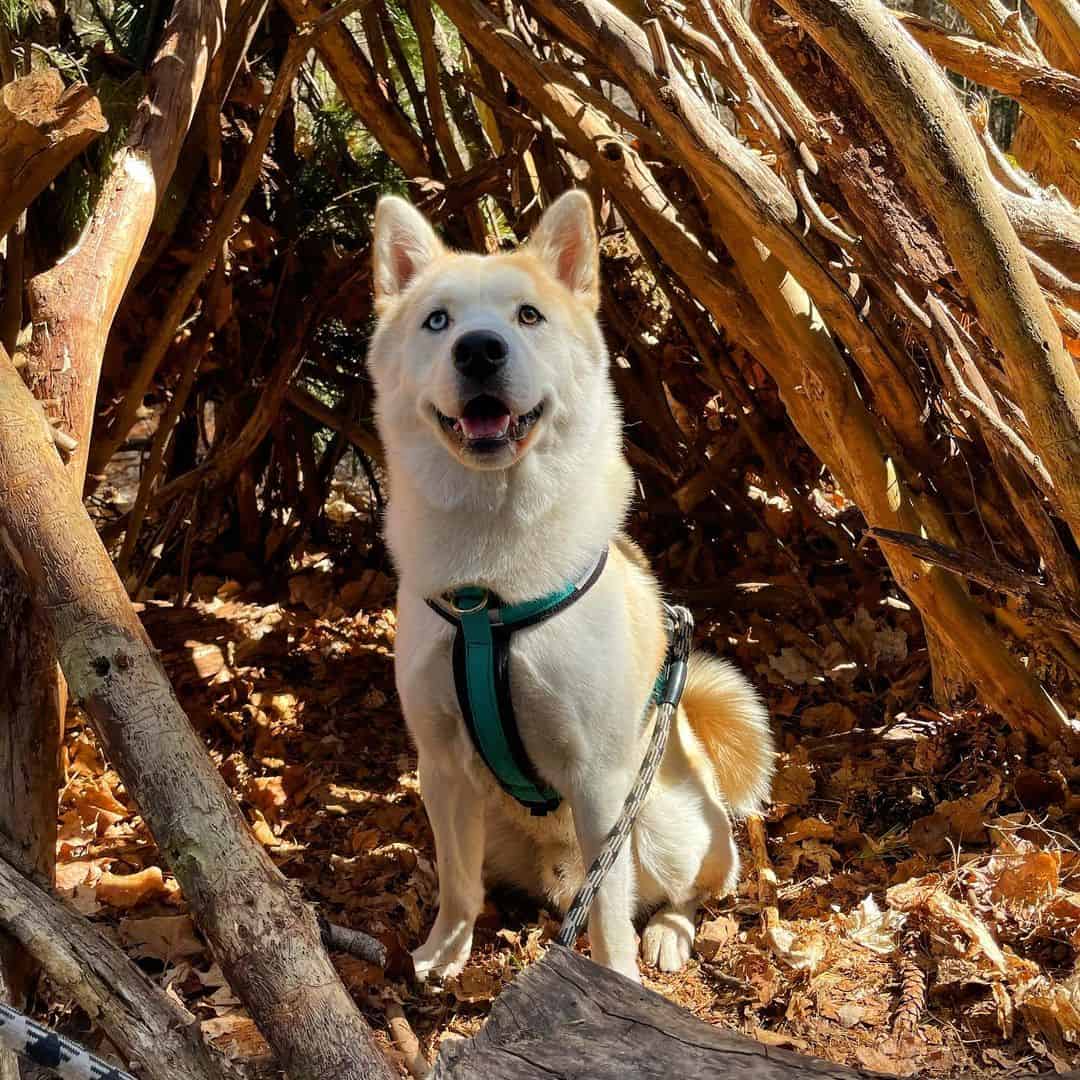
Photo from: @kiba.theinu
Once they get to full size, they’ll weigh between 25 and 50 pounds, as we indicated earlier. That seems quite a broad range, but it’s what you often see in mixed breeds. It all depends on the size of the parents and the dominant genes passed onto the pup.
In terms of height, they’ll stand between 15 and 20 inches, with the females being shorter.
It’s a good size for most people, neither too big nor too small. But remember, this is a strong dog. A fully-grown Shusky could weigh as much as 50 pounds, which might not seem too much to handle for some people. However, if it decides to take flight after the neighbor’s cat, you’ll have a hard time holding it back.
Did we mention that obedience training is a good way to help you stay in control?
Shiba Inu Husky Mix Adoption
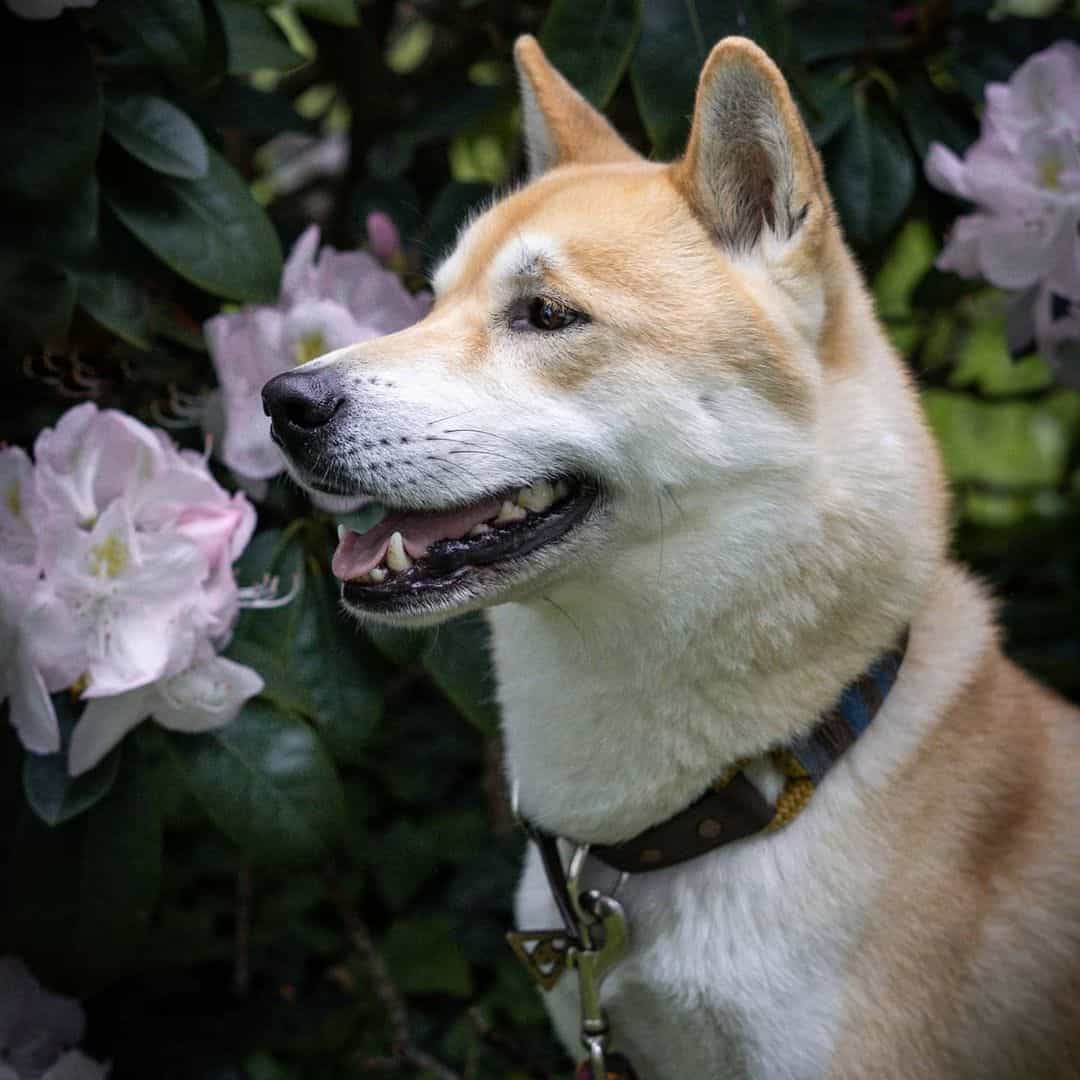
Photo from: @the_real_arkani
Adopting a dog from a rescue center or shelter is always a good option. Too many dogs languish in these places, despite the best efforts of the caring staff to home these poor pooches.
It’s estimated that around 670,000 dogs are euthanized in shelters every year in the USA. If you even give just one of these dogs a home, you’ve probably saved their life.
It’s a win-win when you do as the dog gets a loving home, you can pick them up for a fraction of the cost of buying from a breeder (usually around $300 to $500), and they’ll most likely be vaccinated and spayed/neutered.
Some dedicated rescue groups use foster homes so that the dog doesn’t have to spend any more time in the shelter. This means that they’ll be happier and more open to moving into your home.
There are only two possible negatives: you are unlikely to find a Shiba Inu Husky mix in a shelter just yet, as there just aren’t that many around. And if you do find one, it probably won’t be a puppy – at least, it won’t be any younger than about a year old.
This last point means that you’ll miss out on all the cuteness that comes with owning a puppy. It also means that the previous owner possibly gave up on the dog as they found it too much of a challenge. They may not be trained fully or at all, meaning that the responsibility will fall on your shoulders.
If neither of these issues bothers you, then go ahead!
Living With The Shusky
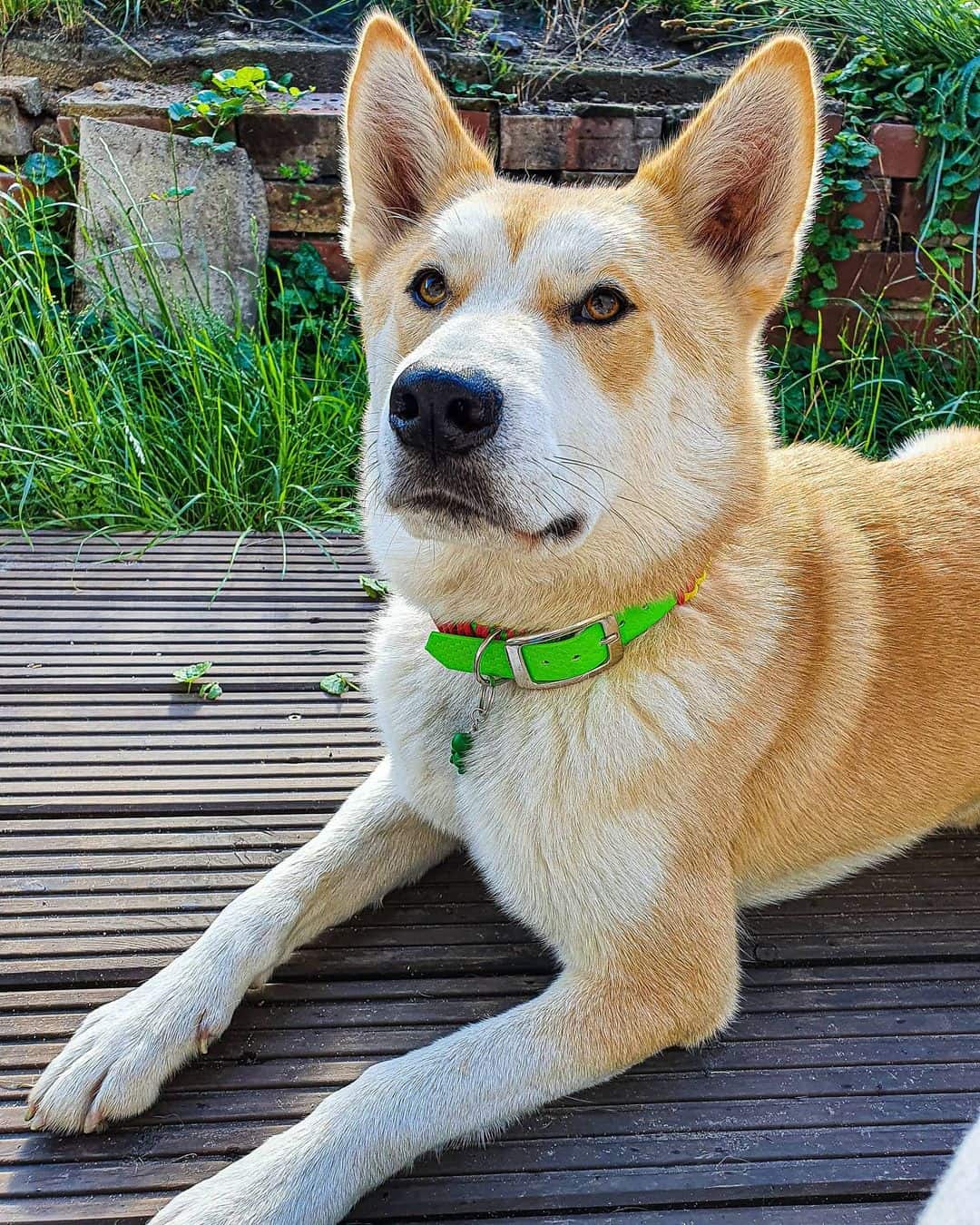
Photo from: @simba.husky.inu
Some people might think that a dog is a dog and that it’s all pretty much the same, whatever breed you choose. Anyone who knows dogs will laugh out loud at this suggestion!
Sharing your home with a Labrador or Golden Retriever is different from sharing it with a German Shepherd. And these are all nothing like living with a Pomeranian or Chihuahua.
Each one has its character and personality, its quirks and needs. They’re all different sizes, even if they’re sometimes subtle. It all makes a difference when they’re part of your family and living in your home.
So, what is it like to live with this cross between an athletic, enthusiastic Japanese dog and a hardy, fun-loving Russian one?
From what we’ve seen, you’ll be in for some fun and games! They’re cute and will keep you smiling all the time at their mischievous sense of humor. They’ll probably be cuddly at times, though they might seek their own space when they feel like it. Be warned – they can be intense and boisterous, so you’ll need to take care if you have small kids.
They make a perfect family dog, so long as you can give them what they need: at least an hour of exercise every day, along with some mental challenges. They need a good quality, high protein diet.
And they need grooming no less than every other day with a de-shedding tool to pull out the loose hairs in the undercoat unless you want a house full of fur! During shedding seasons, you’ll need to brush them every day.
On top of this, you must regularly check their ears and eyes regularly for signs of infection and clip their toenails twice a month. Also, don’t forget to clean those teeth. Aside from keeping their breath fresh, it reduces the risk of dental problems, which can severely impact a dog’s health.
As fluffy and cuddly as they can be, this isn’t the dog for everyone. All that energy needs an outlet, and you will be expected to provide an outlet for it.
If you think you can cope with this and can commit to curbing any behavioral problems through training, you’ll be in for a rewarding experience!
Read Next: Introducing You To The Blue Heeler Husky Mix: The Ausky Guide
